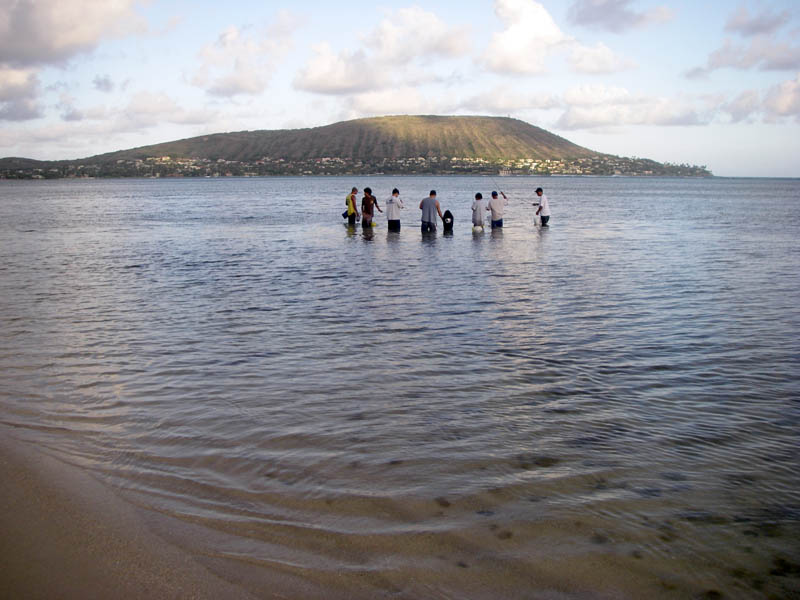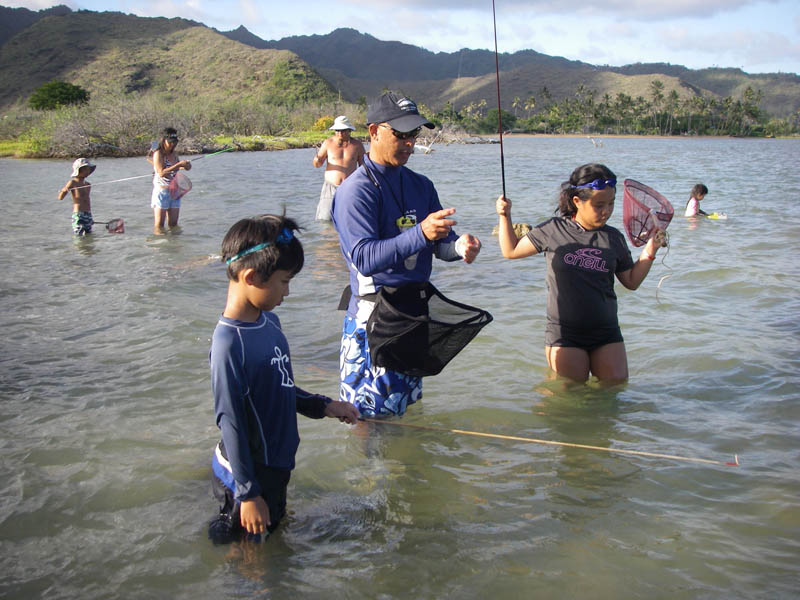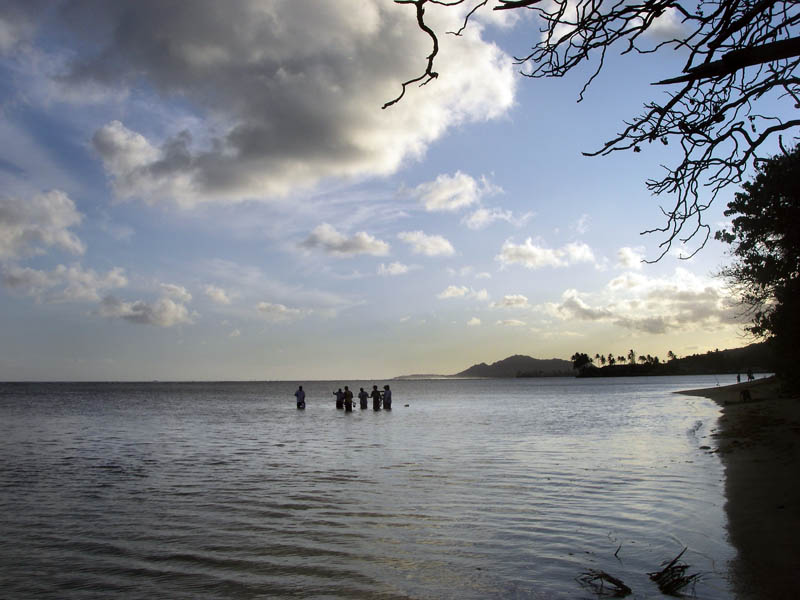
Every August thousands of juvenile fish swarm the shallow waters throughout the state and word spreads from angler to angler via the coconut wireless--the oama have arrived.
Oama, or baby goatfish (family Mullidae--two sensory barbels on the chin below the lower lip), form schools that number in the hundreds or the thousands and the location of the fish can often be determined by scanning the shoreline for groups of people standing in a circle wielding a simple bamboo or fiberglass rods from 3 to 5-feet long in one hand and a small hand net in the other. Terminal tackle consists of light 2 to 4-pound test line from 3 to 4-feet long, a split shot (weight determined by water depth and/or current) and a size 16 to 22 hook ranging from the standard "J' style to the Kahle or Mustad wide gap. The basic bait to use is frozen California shrimp although oama also take fish-based bait (aku belly) as well as eat their own kind when they are heavily feeding.
The bag limit is 50 oama per person per day. There is no saltwater fishing license in Hawaii, so tourist as well as local can gear up and go fishing. Basic tackle is available at any local fishing supply store as well as at Wal-Mart, the Sports Authority and McCully Bike.

Eric and I geared up the family and headed out to catch some oama. This is a great family activity because the fish are plentiful, bite readily and are easily handled by the kids. They also make great live (or dead) bait to catch larger reef fish that come in on the flats to prey on the schools. Jack crevalle (ulua or papio), barracuda (kaku) and even bonefish (o'io) all feed on the juvenile oama and sometimes you'll see the fish spook and scatter as dark streaks tear through the school.
We found some fish in a secluded spot and began fishing. Naturally after a few minutes the kids claimed there were no fish because nothing was biting. I told them the fish were right in front of them and they couldn't see the school because they forgot to bring their dark glasses and couldn't see below the glare. To prove it to my daughter, I took her rod and after a few seconds caught a fish. That ended talk about no fish.

As the tide began to turn the fishing picked up and the kids began to tally up some oama. I didn't do any fishing because I was busy netting oama as they flew through the air (it's tough to coordinate getting a fish into a small hand net when it's flying around your head with the tip of a very sharp, small hook protruding from its lower lip), removing said fish from the hook and holding the bait container.*
It takes a bit of concentration and feel to catch oama. When they're in a feeding frenzy they'll bite hard and often so all you have to do is be there with a hook. Otherwise you begin by putting a small glob of shrimp on the hook point. And I emphasize the word "small". Oama will swim up to the bait and use their front barbels (whiskers) and reach out and "feel" the bait before bringing it to their mouth. If it checks out as food, they eat it. During this "touch" session, if your bait is too big it will be teased off the hook point and the fish get a free meal.

Drop your hook to the bottom and slowly raise it a few inches. Slowly raise and lower the hook and keep a light touch on the rod. When you feel light taps on the rod, give a slight pop to the tip and you should have an oama on the end of your line. Net it, remove the hook (either bag it, keep it in the net or slip it into a floating live well if you intend to use it as live bait), rebait and continue fishing. Fifty fish per person is the bag limit.
Between the six of us we caught about 58 oama and most of these were part of the main course at a family fish fry.
EQUIPMENT: Short bamboo or fiberglass rods 3 to 5-feet long with 2 to 4-pound test line tied to the tip. Use a single split shot about 5 to 6-inches above a size 16 to 22 hook of your choice. The bait of choice is frozen California shrimp which is available at local markets.
EQUIPMENT EXTRA: I tied a few size 22 to 26 flies that resembled small shrimp and a few that looked like a piece of California shrimp on a hook. The oama took the fly that looked like shrimp and ignored the others but real bait outfished the fly.
*NOTE: After a few fishing sessions Little Girl was confident enough to net her own fish and bait her own hook but I still had to remove the fish.